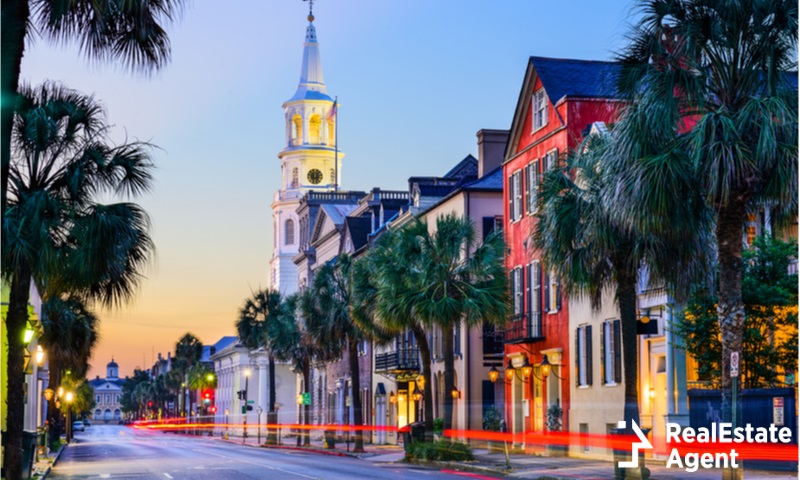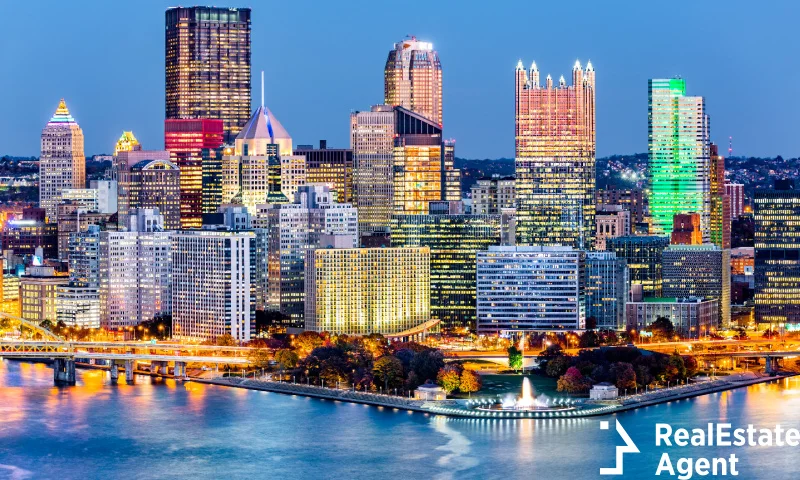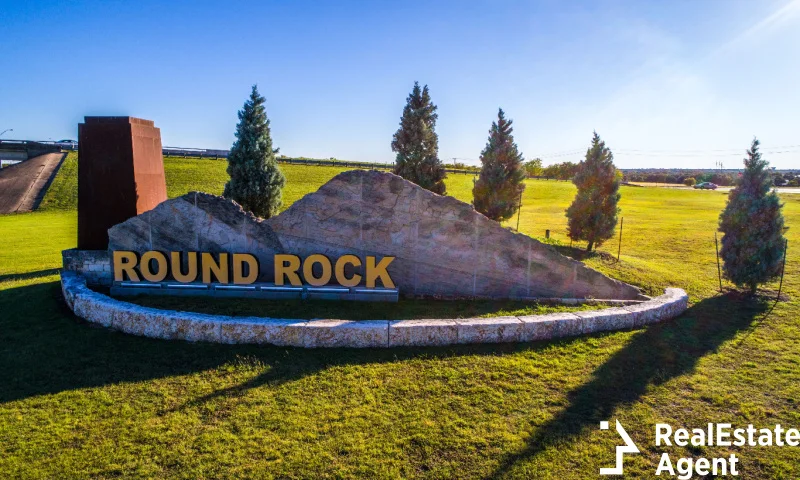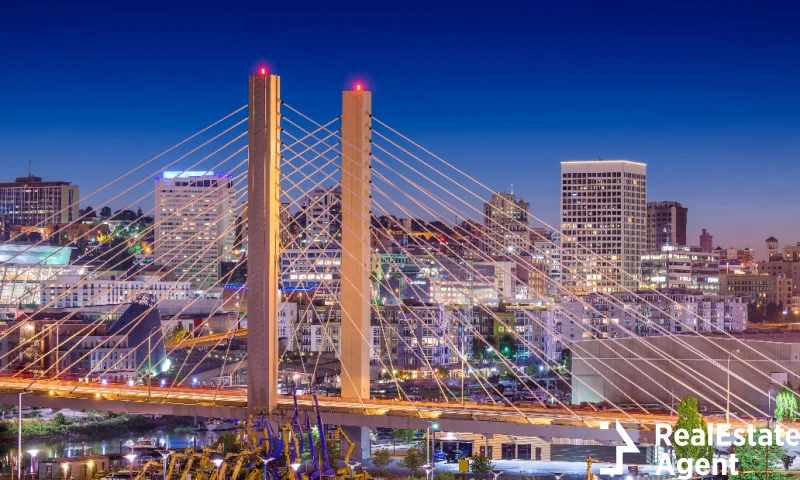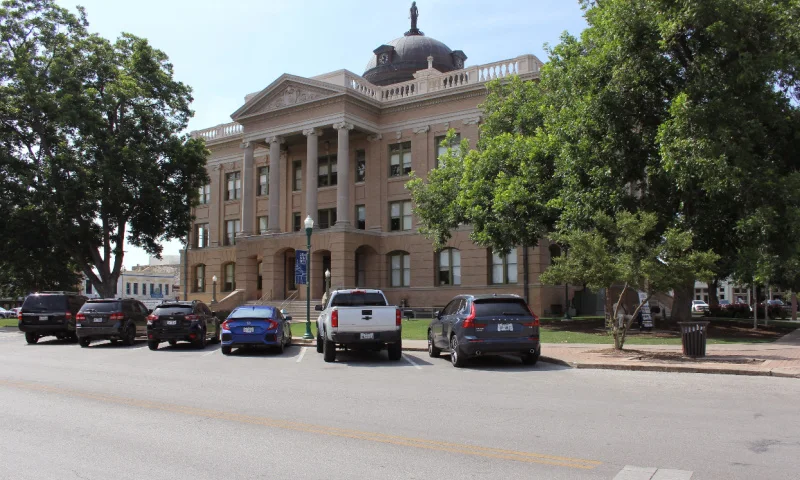Located in the middle of South Carolina’s oceanfront, the city of Charleston, also known as the Holy City, is the first and largest city in the state with around 138,000 residents. As the county seat of Charleston County it stopped being the state’s capital in 1786 when Carolina took over the role. A city with a long and troubled history, Charleston, SC has been named the No. 1 City in the U.S. for many years and it manages to keep attracting visitors as well as new residents. While its population growth has been steady since the early days of the city all the way towards the middle of the 20th century, the accelerated growth experience since the 1950s secured its spot as the largest city in South Carolina.
With a long history comes also a long list of attractions as well as a community that was and still is influenced by its past. With appologies for the treatment of slavery and the atrocities that happened in the past, the city of Charleston is trying to turn over a new leaf and build towards a future of inclusion in stead of exclusion. That rich history also gave birth to the city’s beautiful antebellum architecture for which it is known, and if you couple that with sandy beaches that attract both millennials and retirees you have a perfect vacation spot.
Demographics

With the rich history of Charleston, SC the demographics of the population has seen significant change since the early years of colonization. Even in those days people from various ethnic groups and religious backgrounds were drawn to the city. The years of the slave trade brought along a dramatic increase in the numbers of African Americans as the years following the Civil War brought a decrease in their numbers. From being a majority in the beginning of the 1700s, they now make up less than a quarter of the population of Charleston, SC.
Today, Charleston, SC is among the fastest growing cities in the country as people from the counties nearby are moving to the largest city of South Carolina. Its rapidly growing economy is the main reason so many people are moving to the Holy City.
Racial composition
- White – 71.2%
- African American – 22.3%
- Hispanic (of any race) – 3%
- Asian – 1.9%
- Other Race/Two or more races – 1.5%
- American Indian and Alaskan Native – 0.1%
Living in Charleston, SC

Having been named the country’s friendliest city, Charleston, SC the growing economy is only one of the reasons why hundreds of new residents are relocating here. The cobblestone streets of the city, its amazing antebellum architecture, renowned cuisine and miles of sandy beaches make Charleston, SC a great place to live. As Travel & Leisure’s best city in the United States of America you will surely be charmed by its laid back lifestyle as well as the locals that keep alive the Southern friendly attitude.
Despite its economic growth, the city did not fall in the webs of modernization when it comes to its architectural style. The city center is void of any sky-scrapers as they focused on preserving the antebellum architecture that makes the city of Charleston a delight to visit. It also managed to sustain its coastal appeal as a holiday destination while investing in great amenities for tourists like restaurants, bars and shops that truly respects the city’s culture. When compared to its Georgian rival, Savannah, it is difficult to decide which is more attractive.
The city’s accessibility

Living in the city of Charleston, SC is moderately more expensive than the national average but the overall difference is only 4%. Those that decide to move to the Holy City should take into consideration their financial gain and financial loss when relocating to Charleston, SC as incomes here are higher than the national average as well. It depends on where you are moving from as well as the industry in which you work. The median income in Charleston, SC for an individual was $40,500 during 2018 which was higher than the national median at the time, of $32,600. However, considering the fact that the highest paid industry is the Professional, Scientific & Technical Services and this is also the third highest in number of employees, around 10% of the population access those incomes. The median household income had been $64,600.
As usual of any city, the highest expense when living in the city of Charleston, SC is the housing cost. For those who are interested in purchasing a home, the real estate market in Charleston, SC is less affordable than the national average by approximately 30%. The median home value in Charleston, SC is $337,000 while the medium rent is $1,900/month, which makes renting more affordable as the difference from the national average is 15%. However, the cost for utilities is higher when compared to the national average by 24% which is higher than the national average. Transportation is less expensive by 6%, while groceries surpass the national average by 2%.
Activities available in Charleston, SC

With its rich history, extensive marshland as well as the aforementioned beaches, the possible activities and things to do in Charleston, SC leave little to be desired. The islands that surround the Charleston peninsula offer some great places to visit whenever you want to take a break from the city. Whether you go to Folly Island for some quality time on the beach or Johns Island in order to marvel at the Angel Oak Tree in all its grandeur the area within and around Charleston can keep you busy while at the same time relaxed. Kayaking, fishing, biking and running are just some of the available free things to do in Charleston, SC, aside from the museums, art galleries or historic theaters and places of worship. It has been given the nickname Holy City because of the vast variety of religions that have been welcomed into the city from its early beginnings.
The city of Charleston, SC is relatively a safe place to live as crime rates have dropped in the last decade. It is also a good place to live for families with young children as there are many great educational opportunities.
The housing market in Charleston, SC

Because of the appeal brought about by the economic growth in Charleston, SC, the housing market has had consistency and stability over the last decades. The forecast for the future paints a similar picture, the only possible hiccup might be the limited inventory of houses available on the market.
The real estate market of Charleston, SC seems to be pushing towards the limits of the city as the downtown area is already developed and it has no more area for new housing. But Charleston, SC isn’t the only city that has experienced a rapid growth, as the whole area surrounding it benefits from the city’s development. More communities are being developed on the borders of the city and even further out in the surrounding suburbs. To give a few examples, new developments can be seen in Johns Island, Goose Creek, Upper Mount Pleasant and Downtown Charleston.
Real estate in 2020

Currently, the price for real estate in Charleston, SC is at a median of $337,000 and despite the rather cold market and the effects of the Covid-19 pandemic, unlike many other areas around the country, people keep purchasing property in the city. There has been a limited drop in sales over the last few months and that is a distinct sign of a trusting market. It’s stability and the city’s growing economy manages to overcome the current shock in the market. A percentage of 52.7% of Charlestonians are homeowners while the remaining 47.3% are renters. In regards to renting property in Charleston, SC the limited availability of apartments and condos in the downtown area increase the rent prices which are currently at $1,900/month.
The most common types of homes in Charleston, SC are single-family homes ensuring 49.9% of all housing and out of these, given its coastal location, you can easily find affordable waterfront properties in the city. If you want to have access to the best available listings on the market as well as an expert’s advice you can contact one of our real estate agents in Charleston SC and you and your family can rest assured that you’ll find that perfect home that you’ve been dreaming of.
Conclusion
Living in the city of Charleston, SC brings along many opportunities for employment as well as for educational development. It’s a city that continues to grow and to outgrow its troubling past. As the Holy City walked into the 21th century, it grabbed the attention of investors, developers and traveling enthusiasts. The tourism industry seemed to enhance every good part of Charleston while at the same time, shed some light onto its dark historical reputation.
Let us know in the comments section below what were your expectations from a city like Charleston, SC. Like & Share this article with any friends or family of yours that would love to find out more about the Holy City of South Carolina.

